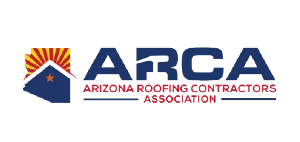If you have a flat roof, there’s a good chance you have dealt with a leak at some point. While sloped roofs quickly direct water off the roof and into the gutter system, flat roofs give water more time to sit and find even the smallest openings.
If you suspect you have a leak, schedule a commercial roof inspection and repairs as soon as possible. The following are the most common sources of flat roof leaks we encounter on a regular basis.
We are the flat roofing repair experts in Arizona and hope this article helps you understand what could be causing your flat roof leaks.
Damaged Flashing
A large percentage of commercial roof leaks can be attributed to flashing, which is installed at the exterior edges of the roof and interior walls to protect the roof membrane. When flashing is not installed correctly or becomes damaged by wind or temperature changes, the edges of the roof cover become exposed. This allows water to seep into the roofing system.
Open Penetrations
A commercial roof has several penetrations like HVAC units, drains, pipes, and vents that must be routed through the roofing membrane. All penetrations are prone to leaks and must be secured to prevent damage. Penetrations should be inspected regularly to ensure they remain water-tight with correct rain collars, pitch pans, and flashing.
Damaged Roof Membrane
The roof membrane is responsible for protecting the interior of the building from water. As the membrane ages, it can crack, shrink, blister, or puncture, exposing the insulation of the roof and giving water a clear path inside. It’s possible for damage to the roof membrane to be repaired if the damage is caught early enough, although a membrane that has reached the end of its expected lifespan will need to be replaced.
Standing Water
If your flat roof has ponding water that remains for at least 48 hours, you clearly have a drainage problem. Standing water weighs about five pounds per inch, per square foot. With a 20-foot by 20-foot area of ponding water that’s just one inch deep, your building’s roof is strained under an extra one ton load. The weight is the greatest risk associated with ponding water on a roof as it can lead to roof collapse, but ponding water also leads to leaks, rot of the roof membrane, algae, and destruction of the reflective coating.
Ponding water is typically the result of incorrect sloping, sagging of the roof, or clogs in the drain system. If you notice ponding water, leaks will quickly follow without quick action.
Regular roof inspection is crucial to detecting problems early and fixing them before they can lead to costly water damage and structural issues. If you notice any of these issues on your flat roof, contact Foam Roofing Experts, Inc. for superior roofing solutions to extend the life of your roof.
Call us at 480-835-5404 to have your Flat Roof repaired or a new one installed!















